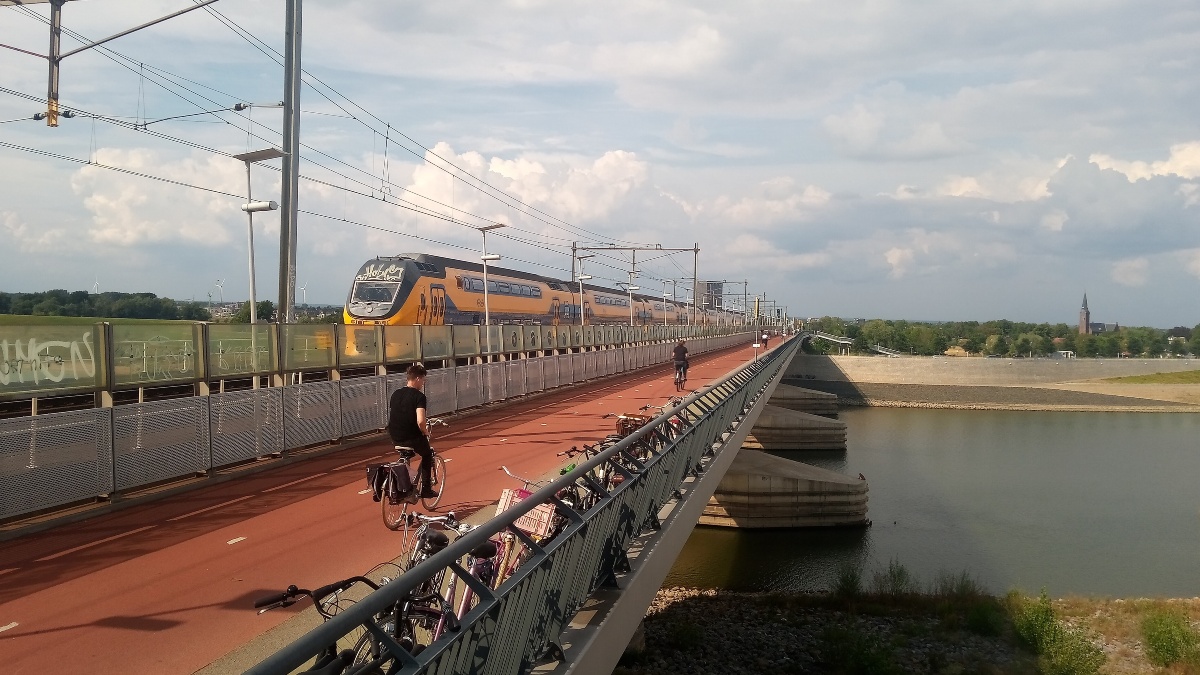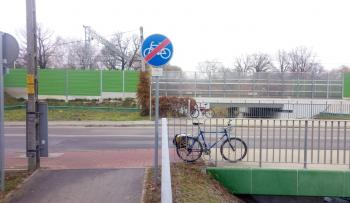
Cycling and TEN-T update: Council of the EU adopts general approach, Parliament works on amendments
ECF takes a look at recent developments within the Council of the EU and the European Parliament to analyse the progress being made in getting cycling and EuroVelo included in the upcoming Trans-European Transport Network guidelines revision.
The Trans-European Transport Network (TEN-T) is the EU's primary network of roads, railway lines, inland waterways, ports and airports. Currently, the network's guidelines are being reviewed by the EU institutions. Thanks to ECF’s work in the past two years, integration of cycling into the guidelines has found its way into the proposals of all the key stakeholders: European Commission, Council of the EU and the European Parliament. With the Parliament finalising its position, and the negotiations between the institutions expected next year, it is a good time to take a look of what we have achieved already and what might possibly happen next year.
Council of the EU
On 5 December 2022, the Council of the EU adopted its “general approach” for the regulation of the EU guidelines for the development of a Trans-European Transport Network (TEN-T). Compared to the draft proposal prepared by the European Commission nearly one year ago, the Council’s position includes several important improvements:
- Health has been added to elements that need to be considered in the cost-benefit analysis. This will significantly help to make case for including infrastructure for active modes in TEN-T projects, because of the immense health benefits of cycling.
- Pedelecs have been included in the definition of active modes, but with the restriction to 25 km/h and 250 W. Therefore, speed pedelecs and some cargo bikes will still fall outside the definition.
- “Promoting active modes of transport” has been explicitly listed in the TEN-T objectives, under sustainability and increasing the benefits for its users (article 4).
- “Promoting the use of active modes of mobility through the development of corresponding infrastructure for cycling and walking” has also been added to general priorities of the TEN-T (article 12).
In chapter III, with specific provisions for different modes of transport, the Council added “developing bicycle parking in the vicinity of the stations” among additional priorities for rail projects, and “ensuring the continuity and accessibility of pedestrian and cycling paths” for inland waterway projects. Unfortunately, both of these are only listed as additional priorities, and no specific requirements have been formulated to ensure the implementation of the TEN-T active mobility objectives.
A positive change is the reduction of the scope of the obligatory upgrade of TEN-T roads to a para-motorway standard. The original Commission proposal threatened to create many new barriers for walking and cycling, by forbidding all at-grade crossings for the whole comprehensive network, the Council proposed to reduce the obligation to “extended core” network.
On a not so optimistic note, the Council aims to water down the section on urban nodes, which used to be the strongest part of the Commission proposal, rephrasing requirements like "Member States shall ensure" to non-binding "attention shall be given to the following". In this area the Council position goes in the opposite direction than the Parliament, as explained below.
European Parliament
In parallel, works on the same legislation continue in the European Parliament. The draft report of the Committee on Transport and Tourism (TRAN), prepared by Barbara Thaler (EPP) and Dominique Riquet (Renew), was presented on 26 October 2022. The report proposes to significantly strengthen provisions for urban nodes (major cities with more than 100,000 inhabitants) and extends their territorial scope to functional urban areas. Within those urban nodes, it would be obligatory to integrate cycling infrastructure in new and upgraded roads and railways. The report also introduces a definition of EuroVelo, the European cycle route network, and extends the definition of active modes to cover also pedelecs. In TEN-T general priorities the rapporteurs propose to include “seeking synergies across all modes of transport, including active modes, and removing barriers to active mobility, when infrastructure is being upgraded or newly built.”
Many other members of the TRAN committee submitted additional proposals, with around 50 amendments directly concerning cycling and active mobility. Of particular interest are the amendments tabled by Elena Kountoura (The Left), who proposed to introduce requirements for TEN-T roads and railways ensuring that they do not constitute a barrier to active modes. Additionally, TEN-T railways would need to enable passenger trips to be combined with active modes, by providing secure bicycle parking, but also ramps or lifts to access the platforms and the station itself. For major roads it would be necessary to provide a parallel cycle track or an alternative route for active modes.
Jakop Dalunde (Greens/EFA) submitted a whole separate section defining EuroVelo, the European cycle route network, as a fully-fledged part of TEN-T. “Include EuroVelo for a healthier Europe,” he asserted in the committee debate on 8 December 2022. Izaskun Bilbao Barandica (Renew) proposed to include infrastructure for pedestrians and cyclists as part of the TEN-T road infrastructure, following a similar opinion from the Committee of the Regions. Several amendments, tabled by Isabel García Muñoz (S&D), Vera Tax (S&D) and Jakop Dalunde, pointed out the need of safety standards for pedestrian and cycling infrastructure.

Examples of tabled amendments (Source: europarl.europa.eu)
What is happening next?
The TRAN committee is developing a set of compromise amendments, taking into account also the opinions from other committees. We would especially like to see the cycling amendments from the European Parliament's Committee on Internal Market and Consumer Protection (IMCO) included, as they are very much complementary to the draft TRAN report; while the TRAN rapporteurs focused on strong provisions for cycling in urban areas, the IMCO committee proposed somewhat weaker but more general regulations.
Voting on the amendments and the final report is expected in January 2023 in the TRAN committee, with the European Parliament plenary likely following up in February. Afterwards, the final shape of the TEN-T revision will be negotiated in the so-called trilogue between the Parliament, the Council and the Commission.
There are some points on which the key stakeholders already agree, such as including pedelecs in the definition of active modes, and including promotion of the active modes in general priorities of the TEN-T. But how exactly the active modes will be promoted, remains to be seen – will there be concrete requirements or only recommendations? Will integration of cycling be limited only to the biggest cities, above 100,000 inhabitants or be a policy for all the TEN-T? Will EuroVelo be integrated in the TEN-T, and if yes, to what degree? Thanks to ECF’s work, great amendments have been tabled – in 2023, we need to ensure they will not become lost in the negotiating process.
Cover photo: Cycling along a railway bridge, Nijmegen, The Netherlands (Source: Aleksander Buczyński, ECF)
Regions:
Network/Project Involved:
Contact the author
Recent news!
Upcoming events
Contact Us
Avenue des Arts, 7-8
Postal address: Rue de la Charité, 22
1210 Brussels, Belgium









